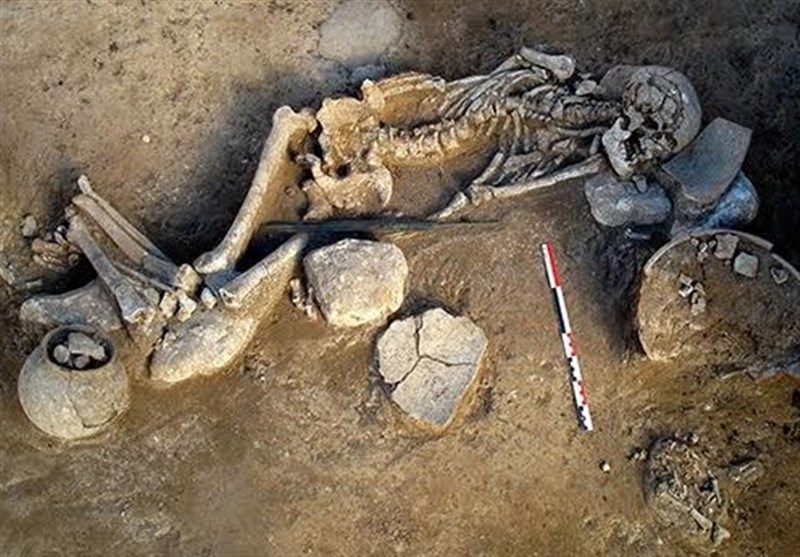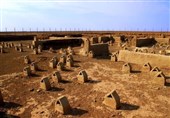3000-Year-Old Skeleton Unearthed in Iran’s North
TEHRAN (Tasnim) – Iranian archaeologists have discovered skeletal human remains near a petrol station in the country’s northern Gilan Province.
According to Shahram Ramin, the head of the archaeological excavation team at the ancient site of Shahran near Rostamabad, several graves were discovered in the site with grave goods.
This group of graves, which according to archaeologists is related to the Iron Age, is about 3000 years old. The area where the graves were found is located along the Rasht highway, close to a newly constructed petrol station, and was at risk of destruction due to the implementation of this project.
Given the immediate danger, a team of archaeologists led by Shahram Ramin urgently started salvage excavations at the site.
During excavations, several graves have been discovered, the most complete of which contains remains of human skeleton buried with a sword and pottery vessels full of animal bones indicating food offering to the deceased man.
According to Sara Khalifeh Soltani, a bioarchaeologist from Boston University, the skeleton belongs to a male about forty years old, with a height between 160 and 167 centimeters.
According to Ramin, given the importance of these findings, detailed recording of the grave and its findings using laser scan is planned.
In addition to the Iron Age graves, a number of stone tools have been discovered in a deeper depth, which, according to preliminary examination by archaeologists at the National Museum of Iran, probably date back to Epipaleolithic period, about 12 thousand years old.
Gilan is well-known for its rich Iron Age cemeteries that were excavated during last century such as Marlik. This rich Iron Age culture probably belonged to a group of people who migrated into Iran from Central Asia in early to mid-2nd millennium BCE. The abundance of arms, horse-trappings (as well as horse burials), and spouted vessels among the grave goods are characteristics of this ancient culture.






